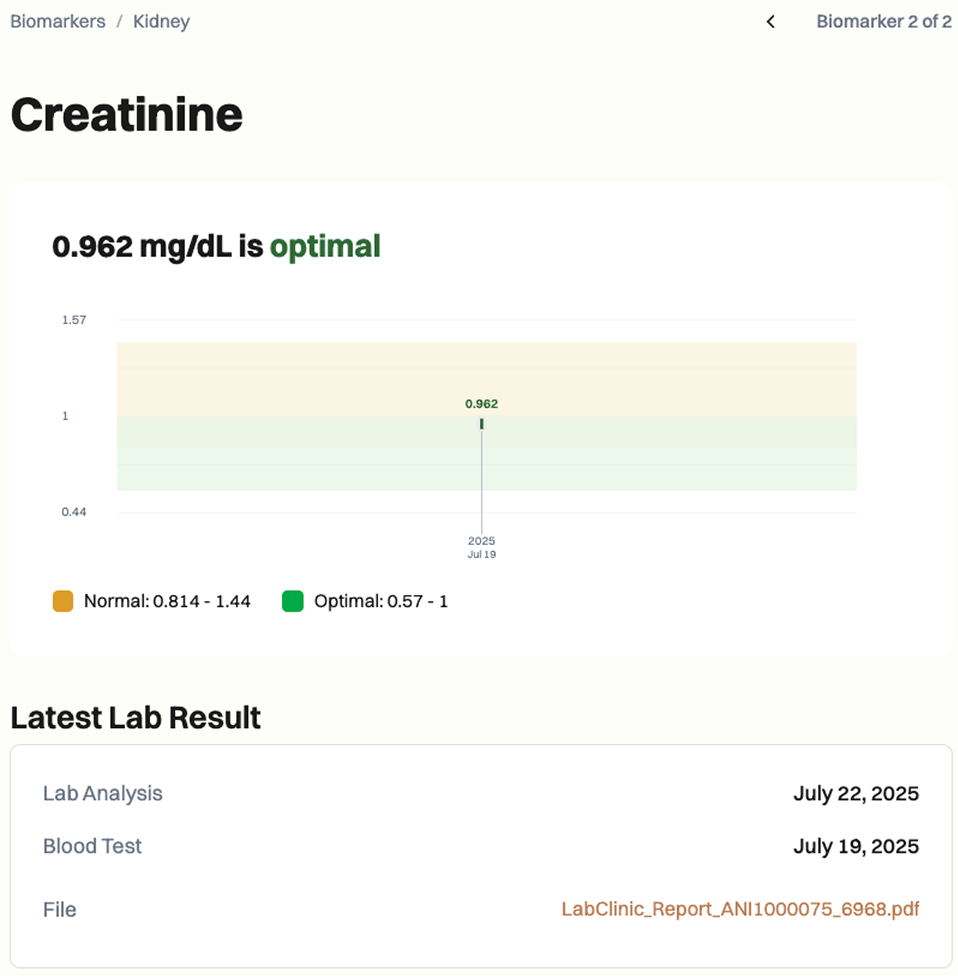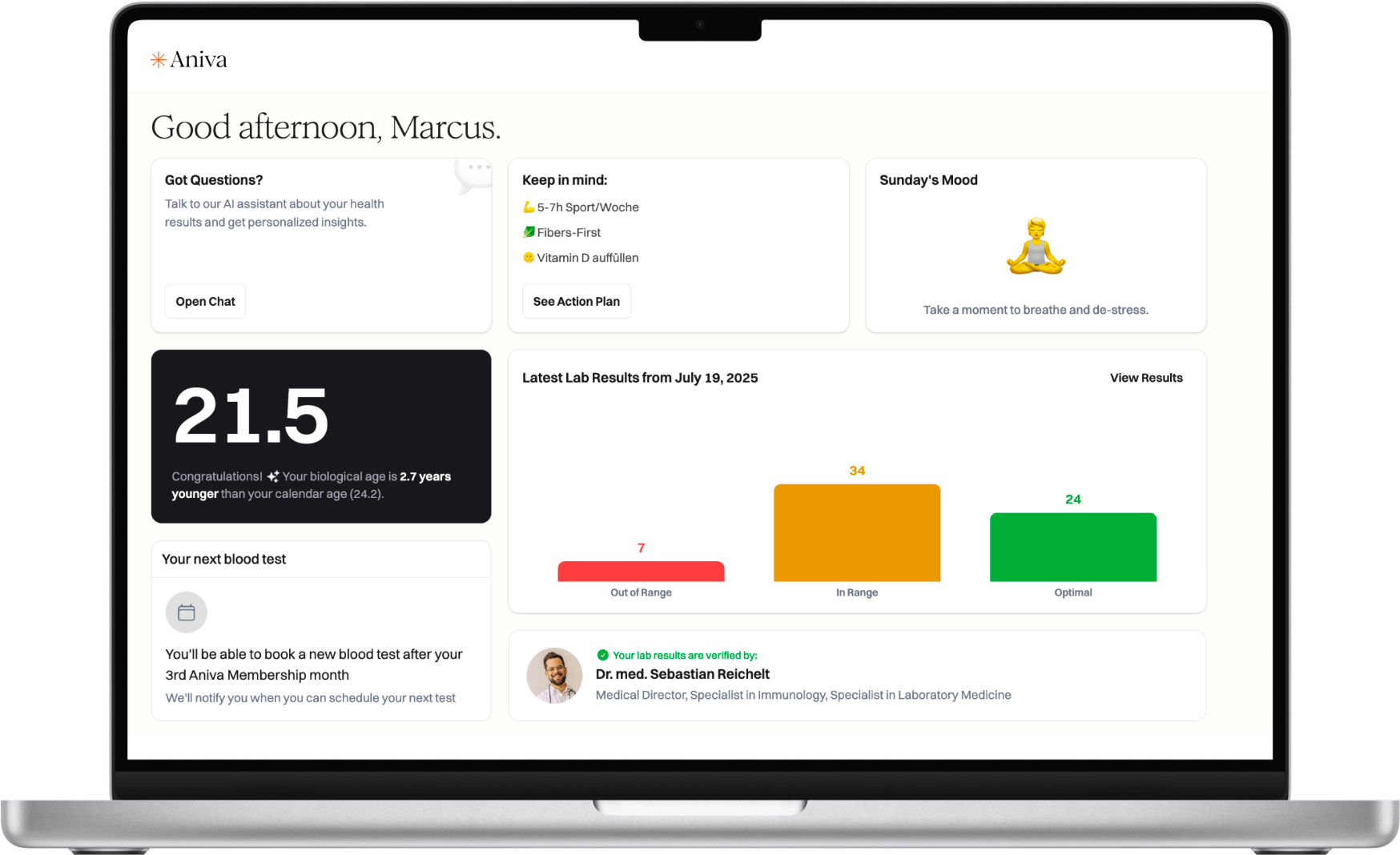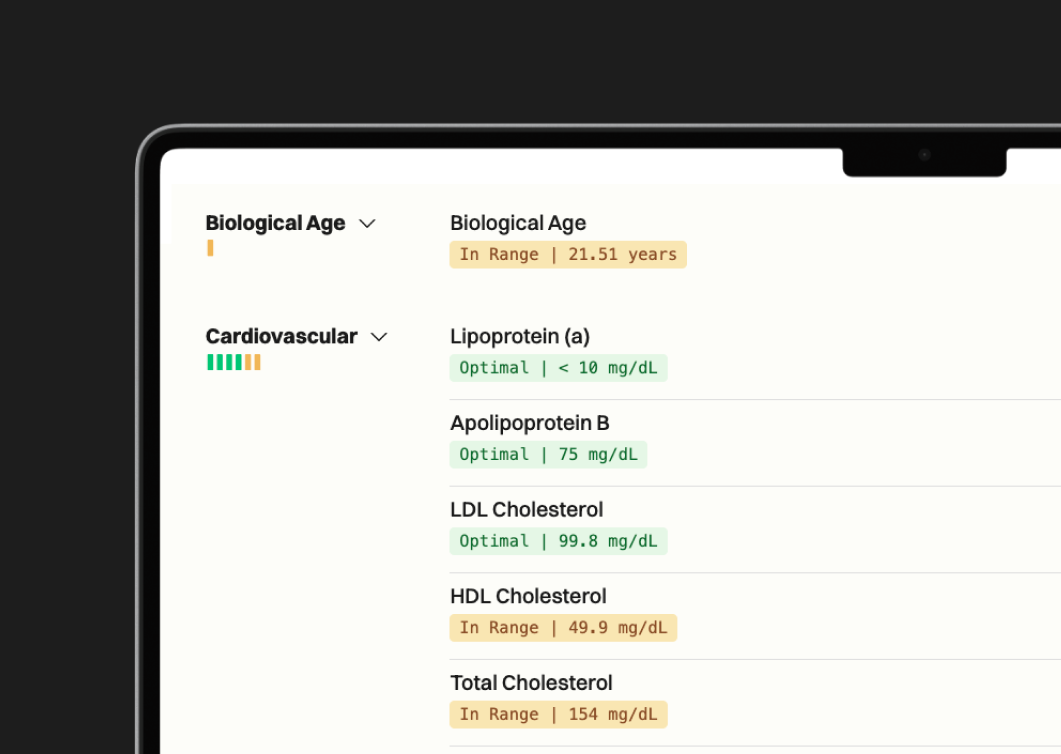Triglycerides are blood fats that help gauge heart and metabolic health.
Securely stored in EU
Cancel anytime
Test 100+ biomarkers

Less than 5 minutes waiting time. One
simple test at one of our 20+ locations.
Get your lab reports within one week.
Accessible on our app and per PDF.
All your health records stored
in a single, convenient place.

Doctors measure triglycerides as part of a cholesterol panel to gauge heart and metabolic risk. It helps spot very high levels that may raise pancreatitis risk and guides lifestyle or medication choices. People with diabetes, obesity, fatty liver, thyroid or kidney issues, or those on certain medicines often benefit. If results are high, a repeat fasting test and related checks may follow. You can test this marker with Aniva across Germany and Finland.
Doctors measure triglycerides as part of a cholesterol panel to gauge heart and metabolic risk. It helps spot very high levels that may raise pancreatitis risk and guides lifestyle or medication choices. People with diabetes, obesity, fatty liver, thyroid or kidney issues, or those on certain medicines often benefit. If results are high, a repeat fasting test and related checks may follow. You can test this marker with Aniva across Germany and Finland.
High: May reflect insulin resistance, excess calories or alcohol, certain medicines, or inherited patterns. It raises cardiometabolic risk; very high levels can increase pancreatitis risk. If nonfasting or unexpectedly high, recheck with a fasting sample and review diet, alcohol, weight, thyroid, liver, kidney, and medicines.
Low: Usually not a concern. Can be seen with low-fat intake, hyperthyroidism, undernutrition, malabsorption, or some medicines. Track trends over time and consider LDL, HDL, non-HDL, and ApoB for context.



Common factors that can skew results include recent eating or drinking, alcohol within the past day, very high‑fat or high‑sugar meals, intense exercise, acute illness or infection, recent surgery, pregnancy, rapid weight changes, and dehydration. Medicines such as oral estrogens, steroids, diuretics, beta-blockers, retinoids, and some HIV therapies can raise levels; omega‑3 supplements and fibrates can lower them. Aim for consistent timing and preparation when comparing results.
Special situations (when to confirm or adjust): repeat with a fasting sample if nonfasting results are high, during pregnancy, after acute illness, or when values are unexpectedly extreme.
What does my triglyceride result mean? It reflects how your body handles fats and carbs. Higher levels can signal higher heart and metabolic risk; very high levels may raise pancreatitis risk.
Do I need to fast for this test? Fasting is not required for routine screening. If results are high or unexpected, a fasting repeat may be recommended.
What can change my triglycerides temporarily? Recent meals, alcohol, intense exercise, illness, pregnancy, and some medicines or supplements can raise or lower levels for a short time.
How often should I test? Most adults check lipids every 1–5 years based on risk. Test more often if you are monitoring changes, symptoms, or treatment.
How long do results take? Most labs report within 1–3 business days.
What should I discuss with my clinician? Review your overall risk, other cholesterol results, diet, alcohol use, weight, medicines, and whether a fasting confirmatory test is needed.



One annual blood test (100+ biomarkers)
Clinician-reviewed insights
Personalized action plan
Access to our AI Concierge
Access to curated products


63%
44%
70%